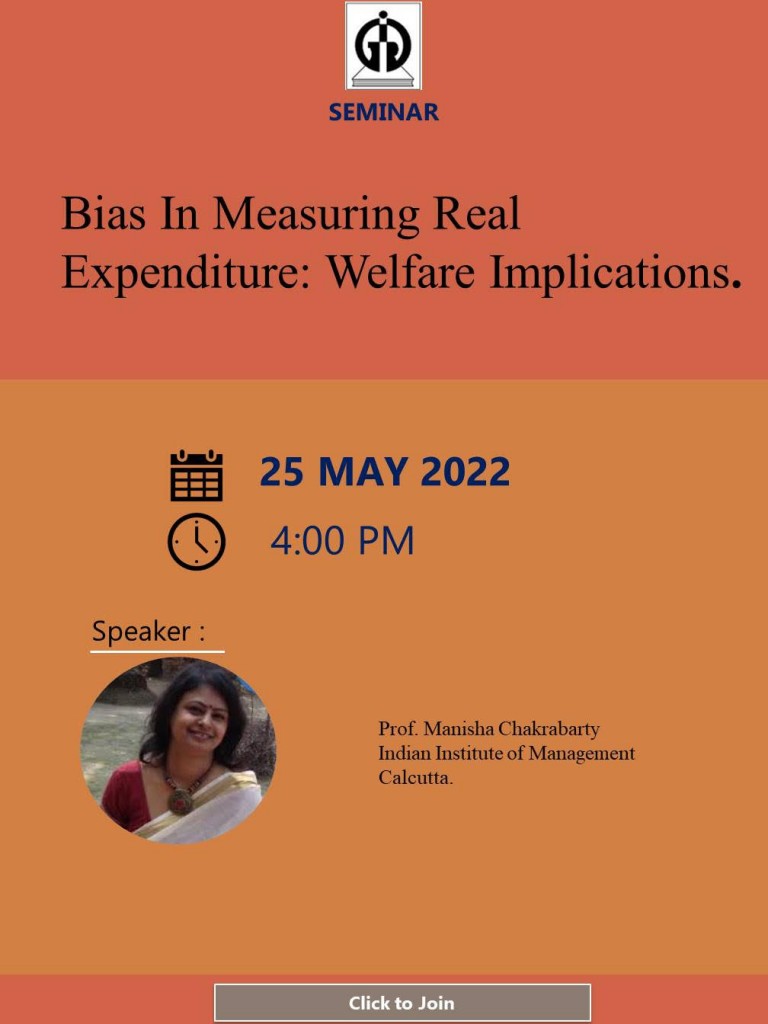Abstract:-
Real Income has been typically used to detect changes in living standards both over time and across spaces. In national account statistics real income is calculated using GDP deflator. Yet the standard practice of price adjustments using such aggregate price indices ignores relative price changes despite being well-established that relative price changes have significant implications for the consumption expenditure pattern of households and the measurements of economic well-being. Using four rounds of NSS Consumption Expenditure Survey data, this article examines the implications of the variations in relative price movements in the measurement of real consumption expenditure. We find that the disregard for relative price changes while adjusting for inflation overestimates the real consumption expenditure of rural Indian households. However, the extent of the overstatement reduces over time. The distribution of real expenditure which does not account for movements in relative prices, underestimates the extent of inequality for the poor whereas overstating that for the rich. Our findings suggest that the concern about using any such aggregate price indices for the price adjustment is valid and has critical implications for welfare, particularly for a country like India, where a quarter of the population lives below the poverty line.


